These days I’m starting—or thinking of starting—a sequel to my 1990 novel, The Hollow Earth. The sequel might be called, in classic style, Return to the Hollow Earth. For convenience, in my writing notes I refer to the volumes as HE1 and HE2.

The set-up for HE1 was that I found the 1850 manuscript of “The Narrative of Mason Algiers Reynolds of Hardware, Virginia” in the University of Virginia Library. It was written by Mason Reynolds. I edited it and published it as The Hollow Earth in a first edition in 1990, and in a second edition in 2006, with a projected third edition to appear in 2018 along with the HE2 sequel.
The afterword to the second edition includes a useful drawing for orienting yourself. The drawing is in sepia ink on vellum, initialed and hand-dated “M. R. 1852.” In viewing the sketch, understand that it depicts a cross-section of Mason’s Hollow Earth, sliced from pole to pole. The lumpy outer shapes represent the Earth’s crust, partly overlaid with seas. Mason’s Earth has Holes at both poles, and there are several additional holes passing through its seas. The creatures within the Hollow Earth are not drawn to scale.

Running clockwise from the top, features to note are:
The maelstrom at the North Hole. Mason’s dog Arf beneath it. A black god riding a lightstreamer. A gap where an ocean runs through Earth’s crust, with a tiny “fried-egg ship” floating up through it—this corresponds to the hole near Chesapeake Bay. A ballula or giant shellsquid. A second ocean gap, in the vicinity of the Bermuda triangle. A flowerperson (Mason’s soon-to-be wife Seela) on a giant flower. A harpy bird above the inner jungle. The South Hole. A second lightstreamer. Another “blue hole” gap within the sea which is meant to lie, I believe, near Tonga and Fiji. A pair of koladull or shrigs. A third lightstreamer, which leads in towards the center where it meets the fan of a woomo or giant sea cucumber or Great Old One. The center also depicts six Umpteen Seas, another woomo, and the sphere of the Central Anomaly, with MirrorSeas visible within.
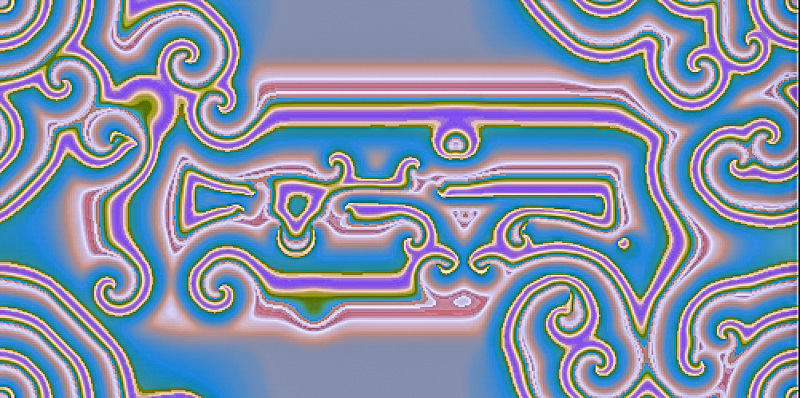
In the sequel HE2 we learn that Mason travelled to California in 1950, ended up making a second journey into the Hollow Earth, and—due the time warping qualities of the Anomaly at the center of the Hollow Earth—when he came back our Earth he found himself in, approximately, the year 2050.
I’m doing the time jump in part because there’s such interest in near-future utopias and dystopias these days. Also I want for HE2 to have something majorly different than HE1. In approximately the year 2050, Mason writes his second memoir, Return to the Hollow Earth, or HE2, a volume which Rudy Rucker is going to edit an publish in 2018 or so.
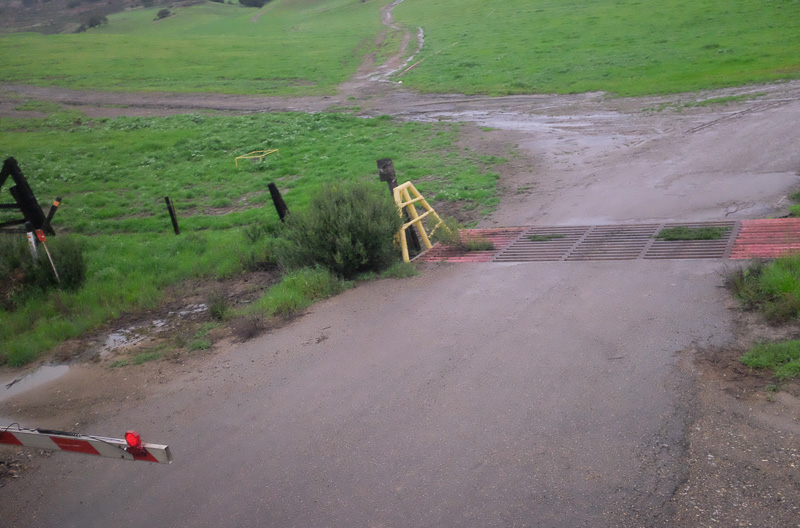
So, okay, the HE2 memoir already exists in MirrorEarth of 2050 that Mason is in. Mason learns of the published volume’s existence after he comes across the published version of HE1, his first memoir. He decides not to read my edition of HE2 before writing it himself. That is, he goes on to write the whole of his HE2 without looking at my published version. This way we water down the creatively vitiating effect of the closed causal loop that I’ll discuss below. And, due to cosmic synchronicity, Mason just so happens to write the same HE2 as the book that already exists because…everything fits. By the way, blindly rewriting an extant book on instinct alone is an idea from a Jorge Luis Borges story, “Pierre Menard, Author of the Quixote.”
Once Mason finishes writing his HE2, he decides that he should find a to way to send it to his preferred editor, Rudy Rucker, to publish in (approximately) 2018. How will he send it? Metaphorically, he sends it to me via time-reversed email, Ã la Gibson’s The Peripheral. But I don’t want a lot of trans-time communication happening in my book. It’s more of a rare one-time event. So I’ll say that there’s a special mechanism by which Mason transmits the book: it’s handed over to me by a Great Old One’s pink tendril.
Here’s another image of the Hollow Earth, this one in color, to help you visualize that.
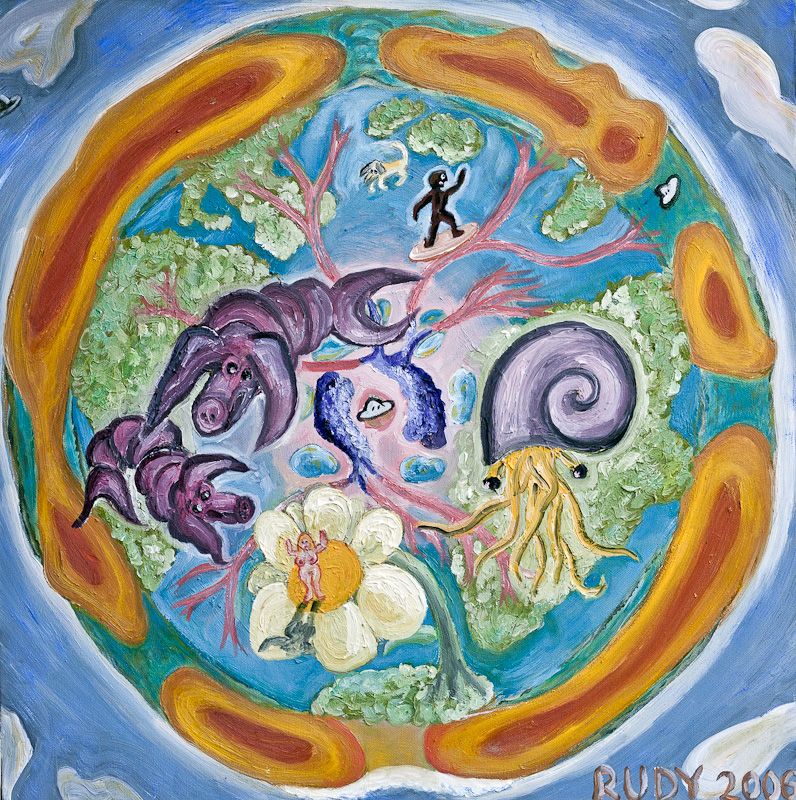
Let me stress the point that, even though HE2 is already in MirrorEarth’s future with Rudy Rucker listed as editor, Mason and the Great Old Ones feel duty-bound to send his HE2 back to me. In this fashion they stave off a potential “Passive Yes & No Paradox” and convert it to a bascially harmless Closed Causal Loop. Say what?
Well, I see three main kinds of time paradox, with the second two being fairly similar.
1. Closed Causal Loop: A future event produces a past event that produces the future event, and so on. The Free Novel: My future self sends me a copy of a novel I plan to write. So I just publish the document as is. Nobody actually had to write it. It emerged.
2. Active Yes & No: I make a phone call to my past self, even though I have no memory of receiving such a call. Did I make the call? Yes and no. Examples: Ineffectual Warning. I have a bad accident, so the next year I’m motivated to phone my past self and tell him how to avoid the accident.. If I don’t have the accident, I don’t make the call, so I have the accident, and I do make the call. Grandfather Paradox: I take out a hit on my grandfather. If he dies, I don’t order the hit and he lives. If he lives, I order the hit and he dies.
3. Passive Yes & No: I get a phone call from my future self. But later, when it’s time for me to make the call to the past, I don’t do it. Did I get the call? Yes and no. Selfish Gambler. I got a tip on the Kentucky Derby from my future self, and I bet on it, and I won big, but then later I don’t get around to passing that tip to my past self. Welshing Novelist. The same as the Free Novel example, except this time, the future author doesn’t bother to send back the novel to the earlier author. In particular, this is what we’d get if Mason didn’t send HE2 back to me.

The Closed Causal Loop isn’t a vicious paradox, and it generates no logical contradictions. The Yes & No paradoxes, however, do seem to require some kind of resolution. Paradox #2 involves, if you will, a sin of commission on the part of the future agent, which #3 involves a sin of omission by the future agent. These paradoxes are sometimes referred to as Consistency Paradoxes.
The solution most often used by SF authors is that of branching time, as shown below. In the figure, the broad paths are worldlines of possible universes. The worldlines can branch. The dotted arrow-lines are paths of influence from future to past.
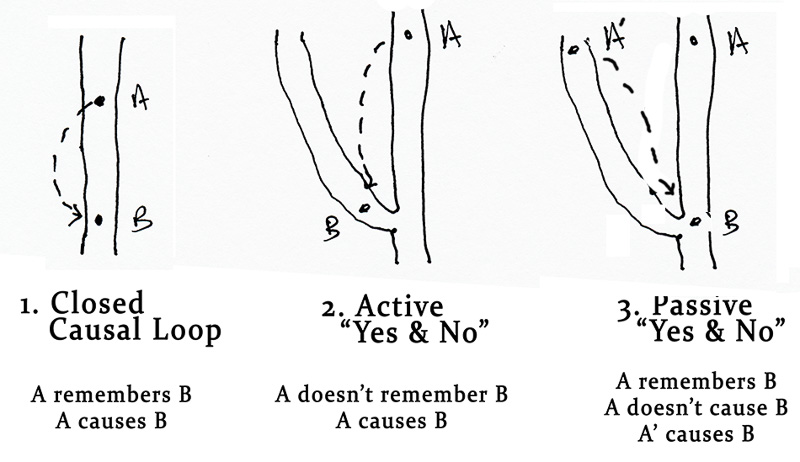
The solution to paradox #2 is that A does something to the past, but the action takes place on a branched-out stub of A’s timeline. The solution to paradox #3 is that the agent who caused event B was in a different time branch, so it wasn’t necessary for A to do it.
In the case of Mason not sending back the book, for instance, we’d have to suppose that some good-hearted Mason in a different timeline did send the manuscript into the past of his timeline.
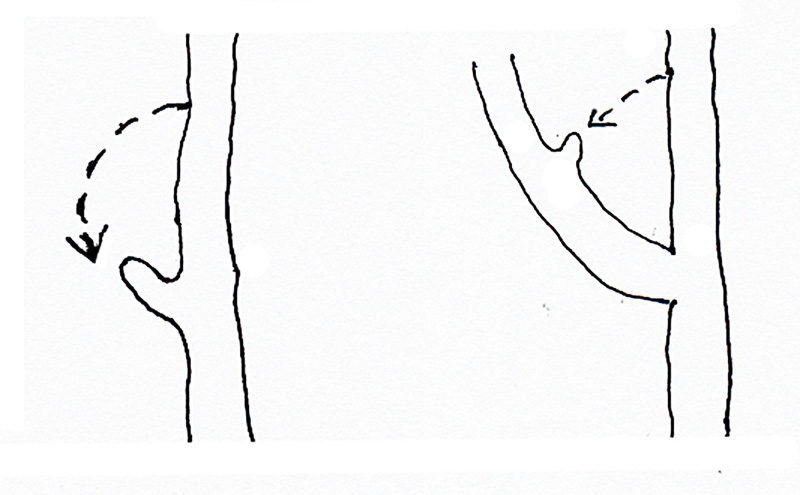
In his recent time-travel novel The Peripheral, William Gibson posits the emergence of a “stub” or fork or alternate timeline for every time a future person “phones” the past. In the image above, I visualize this by showing the stalk of our worldline sending out a stub to meet the incoming signal from the future.
Gibson the allows the future person to continue phoning back to the same stub over and over. It might be more logical to suppose that each successive phone call produces a new sub-stub or sub-sub-stub—as shown on the right. But this would be a conceptual hassle, obfuscating the action of the novel. And, as long as you stuck to the path through the deeper and deeper stubs, the narrative would be the same.
An issue that Gibson doesn’t really get into is whether the world lines and stubs are actively growing while some cosmic meta-time elapses, or whether they might spring into existence fully formed, with the full future and past in place. If the latter, then you would kind of need to have a sub-stub model to make the thing make sense. So probably the former model works better for The Peripheral. And it helps that Bill specifies that the ongoing times of the stub and the main timeline are in synch.

I want to avoid having branching timelines in Return to the Hollow Earth. Yes, I’m working with two Earths: MasonEarth and MirrorEarth (something I’m not getting into in this post). But I don’t want the potential for trillions of time lines. Therefore I’ll limit myself to the closed causal loop paradoxes, and not introduce and Yes & No paradoxes.
For someone sending messages or information to the past, it requires some care to avoid provoking Yes & No paradoxes that require a fork or a multiple timeline. But it’s my feeling that if you tiptoe around gracefully enough, you can contact the past without forking time or provoking a stub. It’s just a matter of being sure to do what already in fact happened. And a matter of being lucky enough that what you want to have happen did in fact already happen.
It could be—at least in my Hollow Earth cosmos—that you’re literally compelled to do the necessary tiptoeing. Particularly if we always have to use a god-like giant-sea-cucumber Great Old One’s tendril to touch the past. We can, I trust, depend on a hyperdimensional Great Old One to have enough finesse to avoid provoking forks—although they will allow closed causal loops.
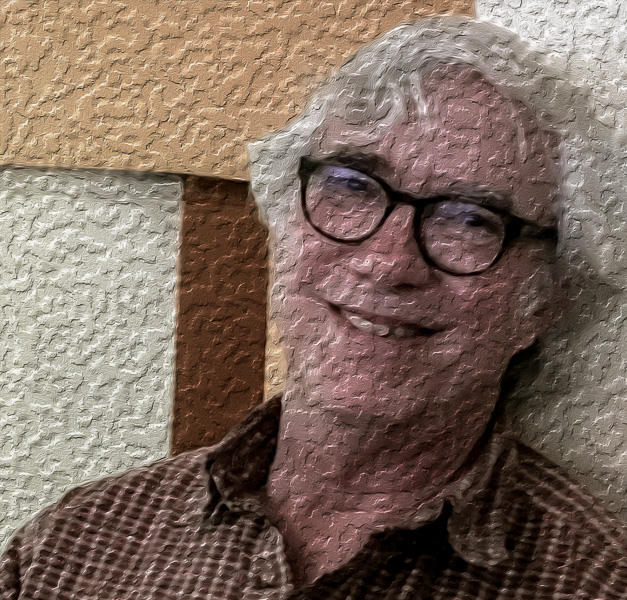
Let me reiterate that there’s nothing logically contradictory in a closed causal loop. If we think in terms of the universe a spacetime whole that arises all at once, then a closed causal loop is like a knot in the grain. A pleasing natural pattern.
A somewhat relevant remark that Kurt Gödel made to me in the 1970s: “Even if you know the future, this doesn’t meant that you’ll deliberately do the opposite of what you wanted to do.” Here I’d need to recast this to “Even if you can change the past, this doesn’t mean you’ll deliberately change it to something different than what happened. Especially if you like what happened. And you may in fact take measures to ensure that the past happened as you currently believe it to have happened.”
And be sure not to welsh on sending back something good you in fact got from the future way back when—lest you provoke a passive Yes & No.









May 3rd, 2017 at 3:06 pm
Looking forward to it!
May 4th, 2017 at 1:07 pm
Hi Rudy — it’s been awhile! Glad you’re pondering deep thoughts about time travel. (Here’s a pop-sci talk I sometimes give on the topic; https://www.youtube.com/watch?v=4748xMb2cic . Your paradox #1 is in what I call a “T1” time travel story (I call your example a ‘bootstrap paradox’); the branching options are what I call “T2” stories. In T1 you also get free-will paradoxes, which are also worth thinking about further. (For example, why would your *future* self feel compelled to stay consistent with the timeline, but not your *past* self? Surely they should be on the same footing, as far as what they feel is “free” about their own choices?)
I didn’t talk much about bootstrap paradoxes in that talk, unfortunately, but I’ve been thinking about them more lately in the “T1” context — and free-will-paradoxes as well — esp. with the movie Arrival fresh on my mind. Some thoughts:
1) I don’t think you need hyper dimensional “Great Old One” to keep everything consistent; all you need is a single copy of the universe, and then it’s logically *impossible* to have an inconsistency. If something happens, somewhere and somewhen, then it’s logically impossible to have something *different* happen at that same place and same time.
2) If there are multiple different consistent universes, some with complex bootstraps (receiving a novel from the future, that you never consciously invent), and others with no-boostraps or simple-bootstraps (you get a single sentence from the future), I would think there would have to be some master probability rule that made the simpler cases much more probable. Say some entropy argument: it’s logically possible that a novel will assemble itself out of sand on the beach, but that doesn’t make it at all *plausible*. Same thing for time-travel-boostrap-paradoxes. I wouldn’t think it would be at all plausible to use one to generate anything particularly complex, like a novel.
3) That leads into free-will paradoxes, which I’ve been trying to sort out lately. I think my favorite resolution right now is to think of the joint history, made by your future and past selves, as a global collaborative decision, between all of your selves. Just as you don’t have complete control over a collaborative decision with someone else, you also don’t have complete control over a collaborative decision with your future or past selves. The single-universe *forces* the various time-traveller-selves to agree on *something*, something that they’re all at least partially amenable to choosing, but I think both future and past selves would be somewhat constrained by such a global-collaboration; they wouldn’t feel totally “free”.
4) This gets even trickier when large-scale events are concerned; say, a newspaper from 100 years from now is sent to the past. For something like this, the entire history of the next 100 years is now a global collaborative decision between essentially everyone who reads the paper before it happens. So then no one person would have much control over anything at all. Still, it makes one wonder: must all news that seemingly-free-agents get from the future necessarily be *good* news, or else it wouldn’t be a plausible collaborative decision? 🙂
I’ll let you know if I ever get my latest essay on all this properly written up! Cheers, Ken
May 8th, 2017 at 4:59 am
I’m quite interesting with this sequel. I find the paradox and hollow earth thing unique and very sci-fi for a book but it’s very interesting how the story goes. I hope it goes well.